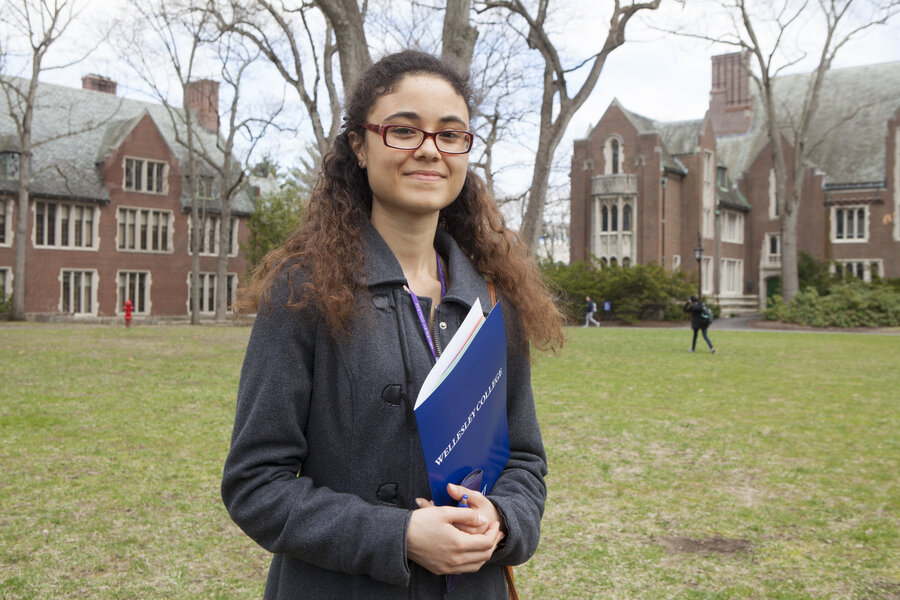College admissions: the myth of meritocracy
Loading...
At this time of year, many high school seniors across the country are anticipating decision letters from colleges to which they’ve applied. Some have benefitted from expert coaching from parents, guidance counselors, and expensive private college counselors. Others muddled through, relying on their own instincts and perhaps the good will of a favorite English teacher for a round of feedback on their essays.
Most submitted their grades and scores on the SAT or ACT exams for their applications. Some attended expensive SAT prep classes or had private SAT tutors, others did not. Some prepared in a quiet room at home, while others fit their preparation in between after school jobs or the responsibility of looking after younger siblings.
In order to curate their list of reach schools, safety schools, and match schools, some visited numerous college campuses. This list for some was aided by conversations with counselors – at school and privately-paid, parents, and older peers and siblings attending those universities. Others met with their overburdened guidance counselor once or twice, because the counselor is responsible for 300-plus students, and consider the local universities they know best. If they are strong students, they may consider the local flagship state university.
Clearly, seniors did not apply to college from a level playing field – but many think they did. In the dozens of interviews I’ve done with students who make it to elite colleges, I’ve found that most students who make it to top universities believe the college admissions process is a meritocracy in which the objectively “best” high school seniors have made it to their campus. They believe that they and their peers have made it because they worked hard and were smart. “Everyone that gets in deserves to be here,” as one Harvard student put it.
But this narrative is wrong.
Children in the United States have unequal educational opportunities, unequal access to information for the college application process, and an unequal understanding of the world of higher education. Black and Latino youth are often burdened by class-based disadvantages, racial bias and stereotype threat (fears of living up to a stereotype about one’s identity) that can keep them from reaching their potential.
And yet the winners of the admissions contest cling to the notion that the college application process is meritocratic.
The implicit message here is that those who didn’t clear the bar were not as smart or hard-working. Students believe that admissions officers should and do consider what opportunities an applicant has had when evaluating achievements, with the implication that any inequality of opportunities is compensated for when admissions officers calibrate their evaluations according to applicants’ life circumstances. Affirmative action in particular softens any lingering doubts about racial equity in the application process.
But selective college admissions produces highly unequal outcomes. The inequality in who ends up at elite colleges has been highly publicized. At Harvard, for example, 85 percent of students have a parent who graduated from college, compared to about one-third of all children in the United States. And 40 percent of students’ families pay full tuition of nearly $60,000 per year, which is more than most American families earn in a year.
Creating equal opportunity is a huge challenge. But we can start by changing our attitudes toward the admissions process. How can we shift students’ understanding of admissions to one that is more realistic about our opportunity structure and inequality in America?
Admissions offices should stop publishing admit rates. Selectivity does not equal meritocracy. It is time to stop reinforcing the idea that students who edge their way in despite high rejection rates must be the best of the best. In an unequal society, some people will always have an unfair advantage when competing for coveted rewards like college admissions.
Elite colleges should make explicit in their admissions literature and information sessions that many more qualified students apply than they can admit, and that a successful application is not necessarily superior to a rejected one.
And since graduates carry the myth of meritocracy with them to the workforce, employers should expand the range of colleges from which they consider job applicants. Recruiters at top consulting and banking firms – most of whom are graduates of elite universities – do not even bother with schools beyond the uber-elite when recruiting for jobs. Looking beyond elite colleges will identify untapped talent while signaling to students and others that supervisors believe talent exists in a range of universities.
Natasha Warikoo is Associate Professor at Harvard Graduate School of Education, and the author of "The Diversity Bargain: And Other Dilemmas of Race, Admissions, and Meritocracy at Elite Universities."







